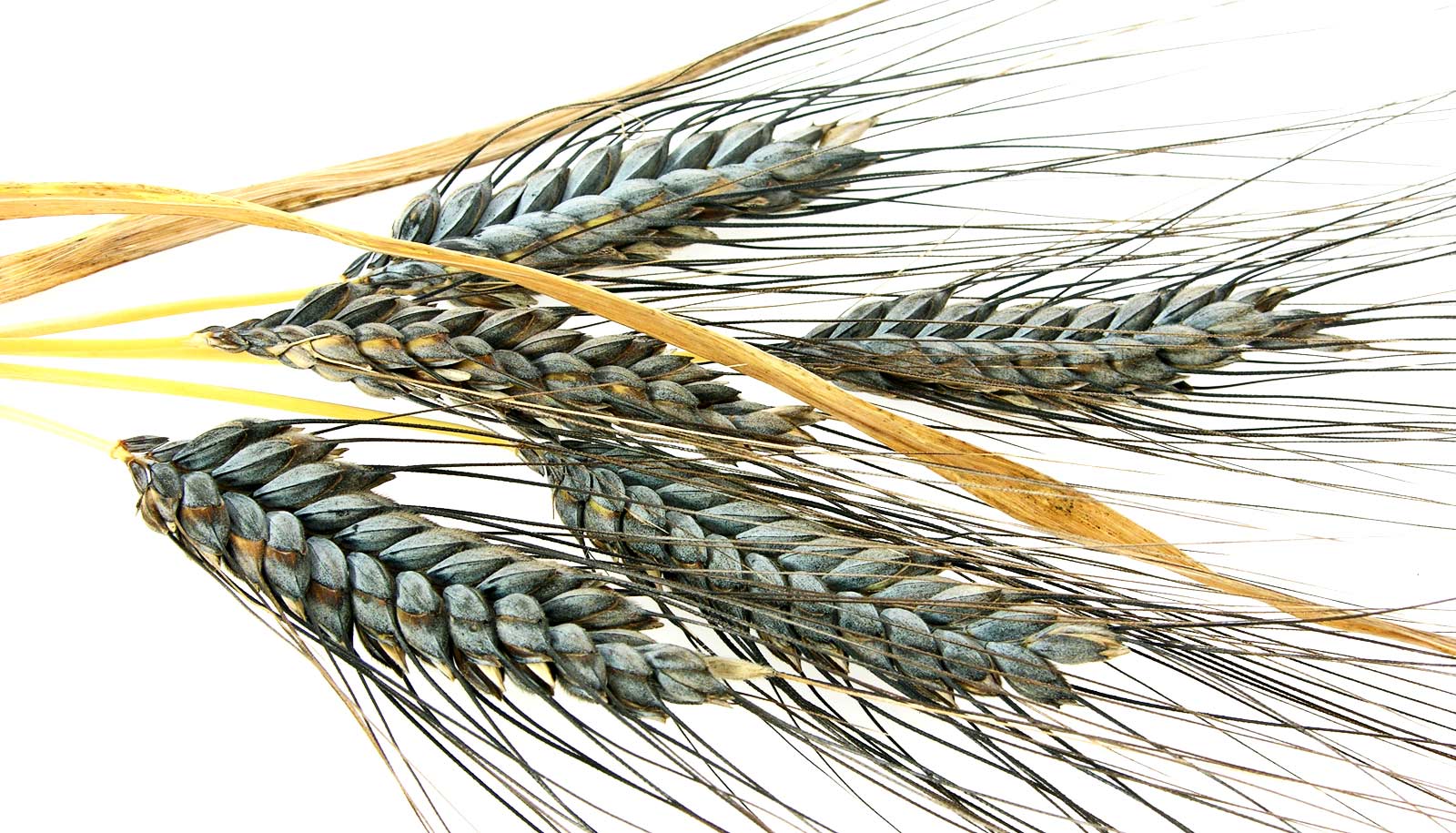Just a few kinds of white and wheat flour dominated the markets for a century, but ancient and heritage varieties of wheat are making a comeback.
A new project shows which modern, ancient, and heritage wheat varieties are most adapted for Northeastern and north-central climates under organic conditions and best processing practices.
As reported in the Journal of Cereal Science, the project also identifies avenues for marketing, and how these varieties fare as bread, pasta, and baked goods.
“Consumer tastes are changing,” says Mark Sorrells, the project’s principal investigator and professor of plant breeding and genetics at Cornell University. “They are interested in local and flavorful food products, and farmers are looking for value-added crops to sell for higher prices to consumers.”
Marketing and economic analyses by Cornell researchers show that the demand for these unusual grains outstrips supply, and food lovers are willing to pay more for bread, pasta, and baked goods made from them.
Still, since older varieties and ancient forms of wheat such as emmer and einkorn have been out of mainstream production for close to a century, little was known about what varieties might be best-suited for organic growing in the region.

Emmer and einkorn
As a result of the project’s collaborations—with researchers, farmers, distributors and marketers, artisanal bakers, restaurants, consumers, and others—alternative grains are now finding their way to plates around the region.
“The project has laid some really important groundwork, and every year, we’ve seen things grow exponentially,” says June Russell, manager of farm inspections and strategic development at Greenmarket, a program of GrowNYC, and a coauthor of the paper. Greenmarket operates farmers markets in 52 locations across all five New York City boroughs and provides a bridge between growers and consumers.
Drought could turn millet into American food
“Demand is building, and that’s helping to drive more acres getting planted and some infrastructure development,” Russell says. Greenmarket has established a solid market for emmer and a growing market for einkorn, and 14 different kinds of wheat are now available, she says.
Wheat from before 1950
Before the project started five years ago, only modern wheat varieties—those developed after 1950—were grown in the Northeast, with a few isolated cases of farmers experimenting with grains. From 2012 to 2015, researchers at Cornell, Penn State, and North Dakota State University evaluated 146 varieties of modern and heritage spring and winter wheat, spring emmer, spring and winter spelt, and spring einkorn for how well they adapted to organic systems.
The varieties came from modern breeding programs, old landraces (crop varieties improved by traditional agricultural methods), wheat once grown in the region, farmer selections, and seed banks. The researchers identified grains that are of better quality, produce larger yields, and resist disease.
For sustainable agriculture, planting varieties of small grains plays an important role in crop rotation and adds to biodiversity. And by selling to local markets, farmers can charge more for their crop because it is fresh, of higher value, and reduces transportation cost.
Through outreach efforts, thousands of farmers have been educated about the best varieties of heritage and ancient grains, where to get seeds, organic management recommendations and techniques, and how to harvest and process the grains.
Climate change is likely bad news for wheat
“To have the information from the field trials has been incredibly valuable for growers,” Russell says. “We didn’t have any of that, especially for organic management.”
Sorrells adds: “The lesson we learned was if you really want to find out what varieties to grow organically, you have to evaluate them organically. Farmers that grow these grains can now look at real data and choose varieties that are most likely to benefit them economically.”
But do they taste good?
The next step was to take select varieties and see how well they baked, cooked, and tasted as sourdough and yeast breads, other baked goods, whole steamed kernels, and as pasta.
“We tried to find those that performed well in trials and from a variety of market classes,” says Lisa Kissing Kucek, project manager and first author of the paper. They chose seven varieties for sourdough baking; five for matzo crackers, yeast bread, shortbread, and cooked grain; and three emmer varieties for pasta and cooked grain evaluations.
Once the items were prepared, sensory evaluations began on Cornell’s Ithaca campus for sourdough evaluations, at the Culinary Institute of America’s New York City campus for baked goods, and at the Natural Gourmet Institute, also in New York City, for emmer pasta.
The project hired a certified sensory trainer, Liz Clarke from Ithaca-based Gimme Coffee, who worked with panels of professional and amateur bakers, consumers, professors, and students. Clarke trained them to identify sweet, salty, sour, and bitter flavors, and to arrive at a consensus for how to describe flavors and textures.
Ancient Chinese recipe makes lumpy, tasty beer
Among the results, Glenn, a modern hard red spring wheat that some specialty farmers were already growing, “did wonderfully in terms of sourdough baking,” Kucek says. “We could validate that this was a great spring wheat for our region.”
So, too, was Tom, a modern hard red spring wheat that hadn’t been grown much regionally. “We have a number of farmers now trying Tom,” she says.
Though modern varieties performed better than heritage and ancient types in the field trials, based on the evaluations, the researchers are working on new breeds that, for example, cross a high-yielding but bland modern variety with a low-yielding but flavorful heritage one, with the goal of producing a new high-yielding, tasty grain.
“The biggest takeaway for me, and I think for our stakeholders too, was that there’s not one variety that meets all needs,” Kucek says. “You should pick varieties based on the product that you are making, so getting that link between farmer and processor is really valuable, so that the processor can say, I really want this variety and then talk to the farmer in order to source it and get it.”
The United States Department of Agriculture’s Organic Research and Extension Initiative funds the work.
Source: Cornell University



